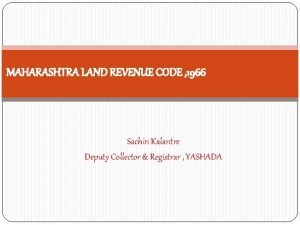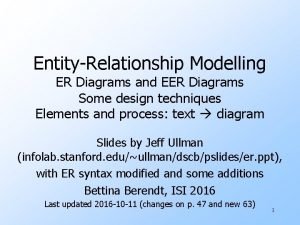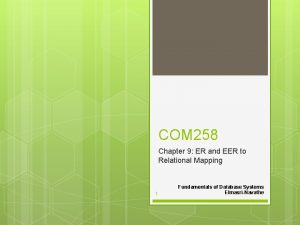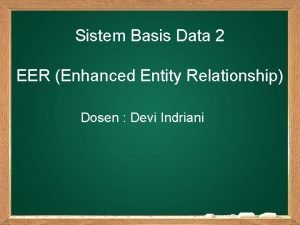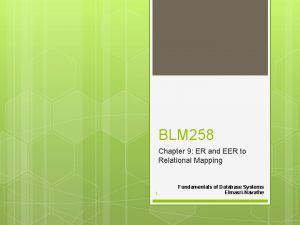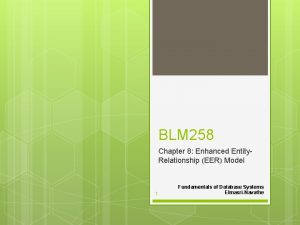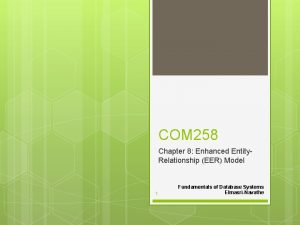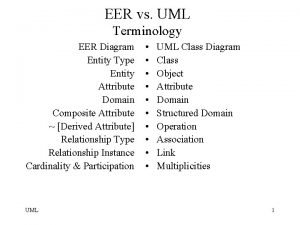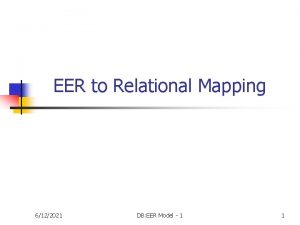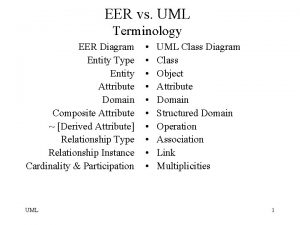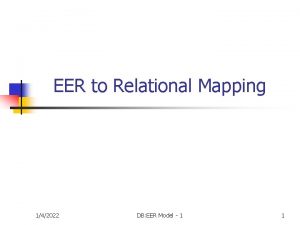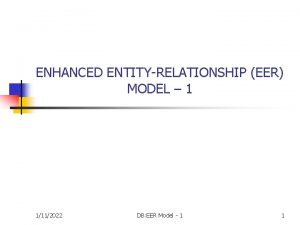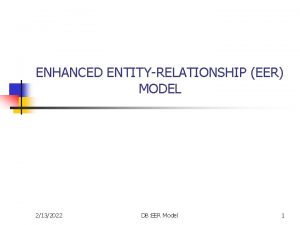COM 258 Chapter 9 ER and EER to













- Slides: 13

COM 258 Chapter 9: ER and EER to Relational Mapping 1 Fundamentals of Database Systems Elmasri-Navathe

2 Outline Mapping ER to Relations Mapping EER to Relations

3 Mapping ER to Relations A relational database schema is produced using conceptual schema ER or EER and seven plus one – eight steps algorithm

4 Mapping ER to Relations Step 1. Mapping Regular Entity Types For each entity type in ER schema, a relation R is created R includes all the simple attributes of given entity

5 Mapping ER to Relations Step 2. Mapping Weak Entity Types For each weak entity type in ER schema, a relation R is created R includes all the simple attributes of given entity and primary key attribute of owner as foreign key attributes of R

6 Mapping ER to Relations

7 Mapping ER to Relations Step In 3. Mapping of Binary 1: 1 Relationship Types this step we have three approaches: Foreign key approach Merged relationship approach Relationship relation approach

8 Mapping ER to Relations Step 4. Mapping of Binary 1: N Relationship Types For each binary 1: N relationship type We need to identf relation tha is at the N side of relation. Other entity’s primary key is included as foreign key. The simple attributes in 1: N relationship is included.

9 Mapping ER to Relations Step 5. Mapping of Binary M: N Relationship Types For each M: N relationship: Create a new relation S The primary key attributes of the entities that participate in this relationship are included as foreign key attributes in S Include simple attributes of M: N relationship

10 Mapping ER to Relations Step 6. Mapping of Multivalued Attributes For each multivalued attribute Create a new relation R Primary key of R will be the combination of attribute itself and primary key of the owner of that multivalued attribute.

11 Mapping ER to Relations Step 7. Mapping of N-ary Relationship Types For each n-ary relationship type R Create a new relation Include primary keys of all participating entity types as foreign keys Include simple attributes

12 Mapping EER to Relations Step 8 (for EER). Mapping Specialization or Generalization 8 A: Multiple Relations-Superclass and subclasses 8 B: Multiple Relations-Subclass relations only 8 C: Single relation with one type attribute 8 D: Single relation with multiple type attributes

13 Mapping EER to Relations




